PENTAS
Pentas
Benth., Bot. Mag. 70: t. 4086. 1844; Benth. & Hook. f., Gen. Pl. 2: 54. 1873; Bailey, Stand. Cycl. Hort. 3: 2538. 1950; Verde, Bull. Jord. Bot. Brux. 23 (3 & 4): 242. 1953; Chen & Taylor, Fl. China @ eFloras.org 19: 290; Nazim & Qaiser, Fl. Pak. @ eFloras.org p. 23.
Mostly perennial herbs or shrubs with erect or prostrate stem, unarmed. Leaves opposite or whorled, petiolate or sessile, mostly ovate or ovate-lanceolate; stipules persistent, interpetiolar and sometimes fused to petiole, triangular to truncate, multifid or setaceous, with segments often gland-tipped. Inflorescence terminal or axillary, cymose, paniculate or corymbiform, often somewhat spicate, many-flowered, subsessile to pedunculate, bracteate. Flowers bisexual, often di- or trimorphic (distylous or triathlons). Calyx tube globose or ovoid, mostly adnate to ovary, (4-) 5 (-6) lobed, lobes often foliaceous, subpersistent in fruit; stipitate glands present between each pair of calyx lobes. Corolla white, pink, red, purple or yellow, salver-form to narrowly tubular; tube long, hairy, dilated at the throat, throat hirsute inside; lobes (4 or) 5-6, ovate or oblong, valvate. Stamens (4-) 5 ( -6), inserted in corolla just below throat, included or exserted, filaments short, anthers dorsifixed. Ovary inferior, 2-locular, ovules numerous, axile placentation; style hairy, filiform; stigmas 2, included or exserted. Fruit 2-locular, many-seeded capsule, subglobose, ovoid or obovoid with apex often elongated into conical beak, loculicidally dehiscent, splitting into 4 valves through apical portion. Seeds minute, brownish.
16 species
Pentas lanceolata
Pentas lanceolata
(Forssk.) Deflers, Voy. Yemen. 142. 1889; Verde, Kew. Bull. 6: 377. 1951; Fl. China @ eFloras.org 19: 290; Fl. Pak. @ eFloras.org p. 24; Pentas cornea Benth., Bot. Mag. t. 4086. 1844; Bailey, St. Cyclop. Hort. 2538. 1950.
Decumbent subshrub, woody at base, ca. 1 m high; branches quadrangular, pilosulous to villous becoming glabrescent with age. Leaves opposite, 4-10 cm x 2-4 cm, ovate, lanceolate, base cuneate, acute or shortly acuminate, entire, soft pubescent, lateral nerves 8-10 pairs; petiole ca. 5 mm long, pilosulous to villous. Stipules truncate to broadly rounded, with 1-5 setae, 1-4 mm long, villous. Inflorescence a single cluster of cymose, terminal; peduncle 3-12 cm long; branched portion congested-cymose, 1.5-4 cm x 1.5-4 cm, densely pilosulous to villous; bracts narrowly triangular to linear, ca. 1 mm long. Flowers sessile or subsessile, pale purple, white or red, 2-2.5 cm long. Calyx tube ca. 2 mm long and 1.5-2.5 mm wide, lobes 5, narrowly oblanceolate to elliptic, unequal, larger 5-10 mm long and smaller 1-3 mm long, densely hairy. Corolla salverform, sparsely hirtellous to glabrescent outside; tube slender, 15-25 mm long; throat 3-5 mm x 2-3 mm, densely barbate; lobes 4-8 mm x 1.5-2.5 mm, elliptic or oblong-lanceolate, acute. Stamens 5, inserted below the villous throat of corolla, filaments short; anthers ca. 2 mm long, dorsifixed. Ovary inferior, 2-locular, ovules numerous per loculus, axile placentation; style filiform, hairy; stigmas 2, exserted.
Capsules obovoid, 4-6 mm x 4-6 mm, with beak 1-2 mm long. (Fruit not observed)
Common Names: Pentas, Star Flower, Star Cluster
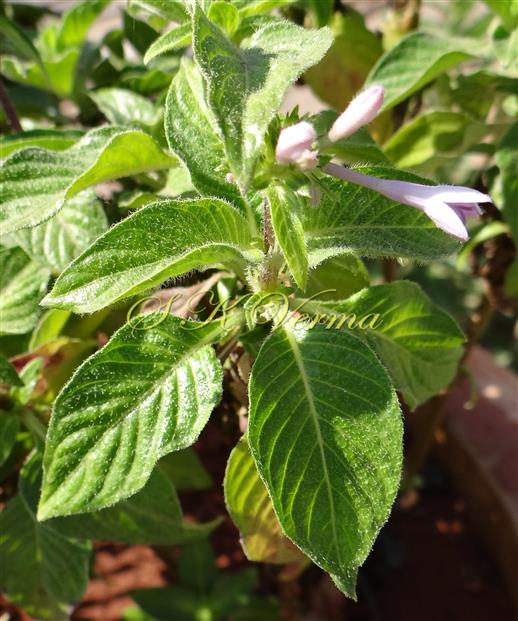
-DSC09722.jpg)
-DSC09723.jpg)
-DSC09720.jpg)
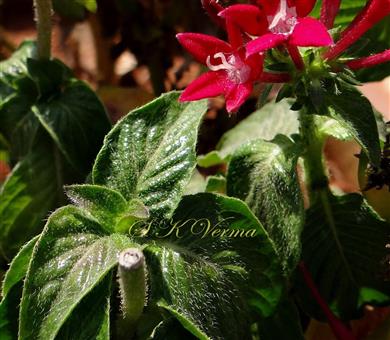
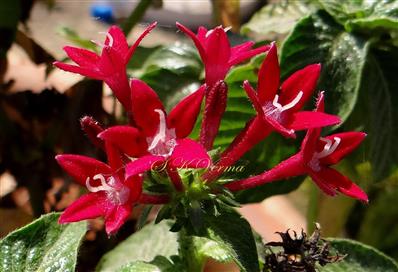
-DSC09714.jpg)
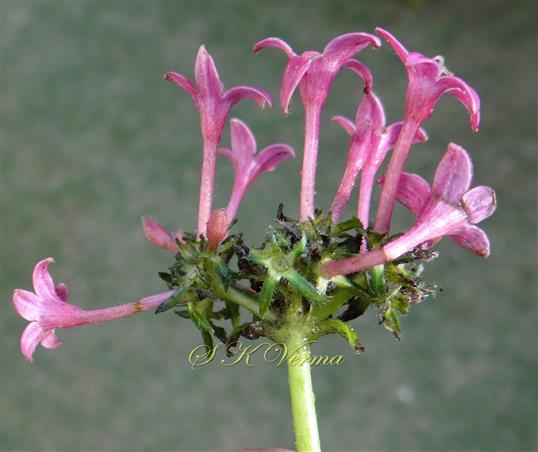
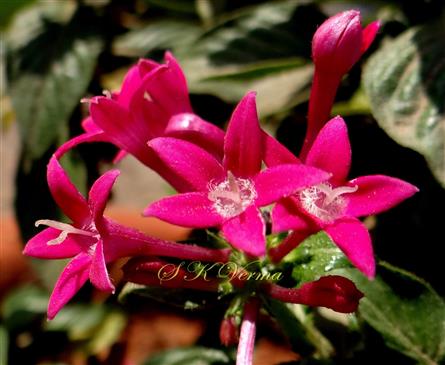
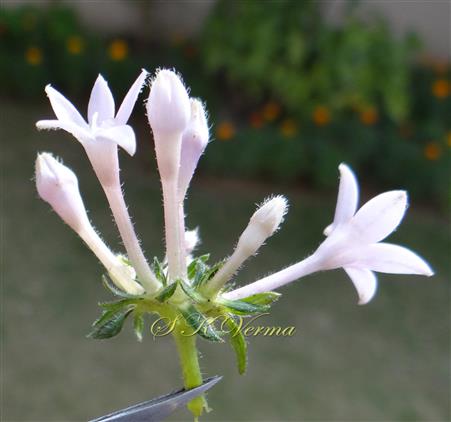
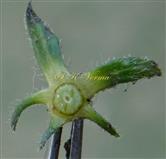
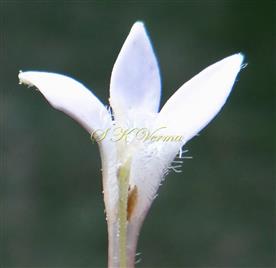
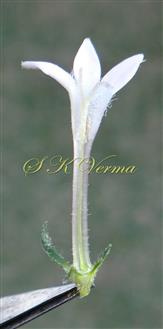


-DSC09722.jpg)
-DSC09723.jpg)
-DSC09720.jpg)


-DSC09714.jpg)





